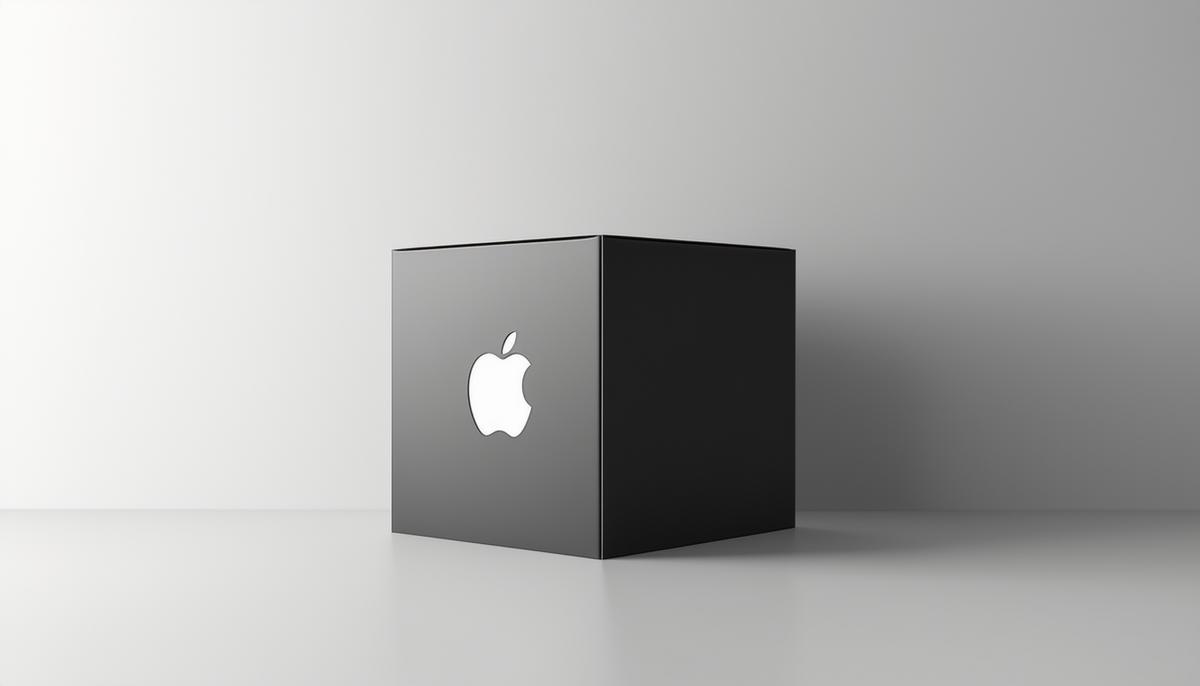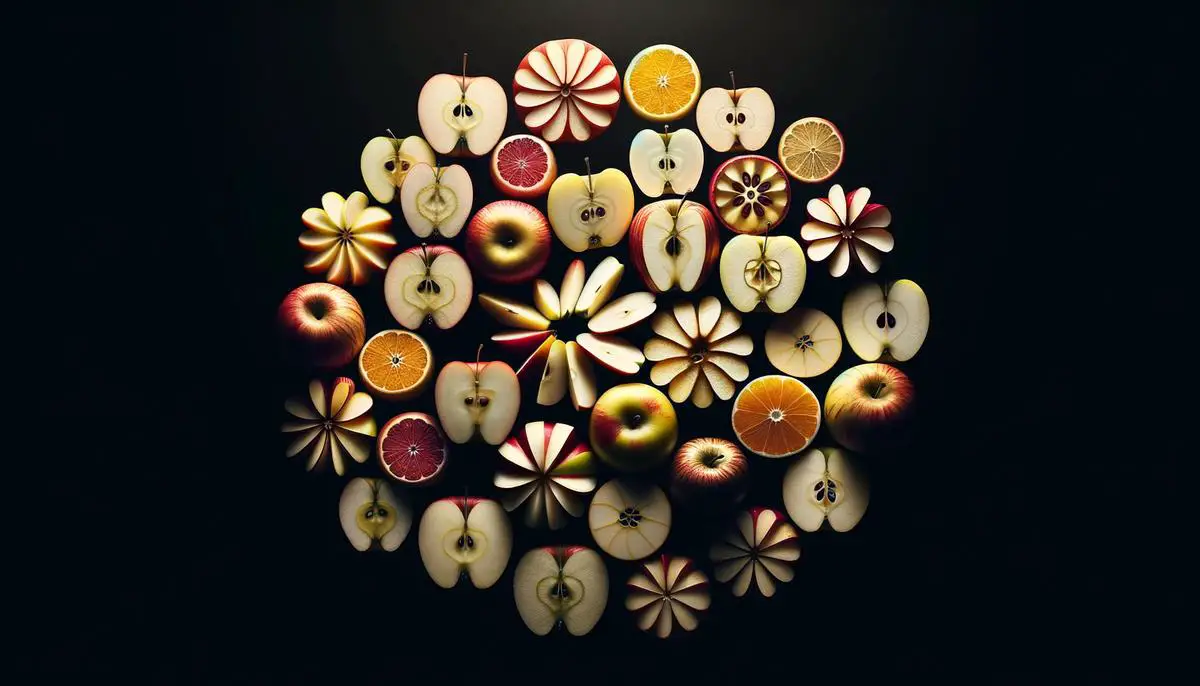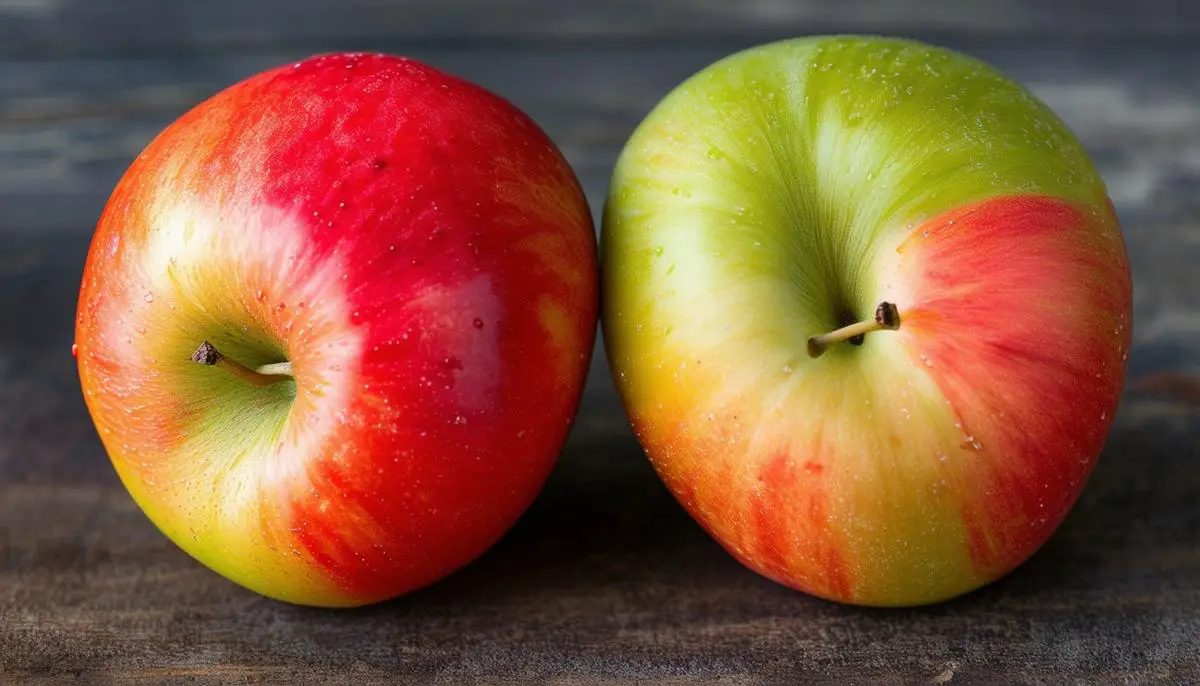Branding and marketing significantly influence consumer behavior, even for something as basic as apples. Understanding how logos, names, packaging, and marketing strategies shape perceptions reveals how these elements transform an ordinary fruit into a sought-after item. Sensory attributes like taste and texture also play crucial roles in our preferences. The methods used to grow apples influence our choices considerably. Different market segments and demographics add layers of intricacy to apple buying habits.
Influence of Branding and Marketing
Branding elements like logos, names, and packaging profoundly affect apple buying behavior. Consider Apple (the company) and its shiny logo that exudes sophistication and simplicity. This branding magic could easily be applied to our beloved fruit to mold consumer perceptions.
Logos can make this humble fruit feel like a status symbol. Picture an apple with an elegant, minimalistic design that suggests luxury. Consumers aren't just eating a piece of fruit; they're tasting exclusivity.
Names matter too. "Golden Zenith" isn't just any apple. It's an experience, a celebration of taste and quality. It makes you feel chic just saying it. This psychological trick employed by fancy wine brands can work wonders for apples too.
Packaging deserves attention. Instead of crinkly plastic bags, imagine a sleek box with geometric designs that evokes a sense of craft and care. It's like unwrapping a little present every time you grab an apple.
Effective Marketing Strategies for Apples:
- Create emotionally engaging ad campaigns
- Implement seasonal launches for new apple varieties
- Develop immersive in-store experiences
- Maintain consistent quality to build trust and loyalty
Borrowing from Apple's strategy, consider having a seasonal launch, hyping up a new breed's arrival. Tease your customers with enigmatic ads, sparking interest and curiosity. It taps into the basic human need for novelty while also cementing the brand in public consciousness.
In-store experiences can be game-changers. Create an immersive apple experience, like farmer's markets with tasting stations where people can learn about the apple's origin, tasting notes, and best pairings. By educating and engaging consumers, you're transforming a simple act of buying an apple into an intriguing event.
Consistency is key. A reliable delivery of quality keeps customers coming back. Once you've branded your apple as the epitome of excellence, maintain that promise. Consistent quality reinforces trust and loyalty, much like Apple's "It just works" mantra.

Sensory Attributes and Consumer Preferences
Why do we gravitate towards certain apples? Let's examine the layers of sensory magic. Biting into an apple can trigger an explosion of sensations that make you swoon. This isn't just about taste; it's about texture, juiciness, and that indescribable crunch that makes your heart sing.
Key Sensory Attributes:
- Taste: The balance of sweetness and tartness
- Texture: The perfect crunch and firmness
- Juiciness: The refreshing burst of liquid
Taste is crucial. Take a bite of a Honeycrisp. It offers a blend of sweet and tart that dances on your taste buds like a symphony. Compare that to a Red Delicious—it's more like a flat note in a high-energy song. It lacks the zing, the vibrancy, which is why it often gets relegated to the bottom of the fruit bowl.
Texture is equally important. Imagine biting into a Fuji—firm yet yielding, with that perfect balance of crunch and softness. It's like the apple itself is welcoming you into an orchard of delight. Contrast this with a mealy apple. Encountering one of those is like biting into a sponge. Yuk!
Juiciness is the nectar of the apple world. A juicy apple like a Gala or a Pink Lady is like a fountain of refreshment. Every bite releases a torrent of liquid gold that runs down your chin and makes you feel like a happy kid again. On the flip side, a dry apple cries out in shame.
"The first bite into a Cosmic Crisp: the juicy burst, the balanced sweetness, the firm yet inviting flesh, and the satisfying crunch. That experience creates not just satisfaction but loyalty."
But preferences vary. Some people might crave the tartness of a Granny Smith for their midday snack, while others might love the mellow sweetness of a Golden Delicious in their salad. Think about those rare varieties like the Opal apple, golden and slightly nutty, pleading to be discovered and savored by adventurous palates.
International varieties add another dimension. Ever tried a Japanese Mizuki? It's like tasting a piece of art, bred to be not just delicious but also otherworldly in its texture and juiciness. Such apples elevate the munching experience, turning it into a gourmet affair.

Impact of Production Methods on Consumer Choices
The way an apple is grown can heavily influence our choices. Let's explore organic versus conventional farming, traceability systems, and the epic saga of pesticides and fertilizers. This is where science meets scrumptious!
Picture biting into an apple, knowing it's been nurtured by Mother Nature herself, free from synthetic chemicals. That's the organic allure. You feel an almost primal connection with the earth, basking in the knowledge that this apple was nurtured with compost, natural pesticides (think neem oil and the like), and sustainable practices. For many, it's not just a taste preference but a lifestyle choice, emphasizing health and environmental stewardship.
Research says 62% of us have been swayed into making impulse buys; add the word "organic" into the mix, and suddenly you've got yourself a lush, eco-friendly snack that feels like it's doing double duty—good for you and good for the planet.1
Traceability systems are the unsung heroes in our pursuit of transparency. Imagine being able to scan a QR code and trace your apple's journey from a quaint orchard in Washington State to your kitchen. That's the future we're heading towards, ensuring your apple wasn't affected by any questionable chemicals or middlemen.
Now, consider pesticides and fertilizers. Picture this scenario: An apple grown with synthetic fertilizers, sprayed with pesticides nine times throughout the year. While this might maximize the apple's size and appearance, it might leave you wondering what's seeping into your beloved fruit's skin.
Consumer Segments Based on Production Preferences:
| Segment | Percentage | Characteristics |
|---|---|---|
| Non-price-sensitive | 53.5% | Willing to pay premium for organic and low-pesticide apples |
| Price-sensitive | 24.8% | Prefer conventional apples due to lower cost |
| Pesticide-sensitive | 21.7% | Highly concerned about chemical use, seek organic options |
We now inhabit a world where consumer awareness is as sharp and zesty as a Granny Smith. People are discerning, and they're willing to fork over extra dough for apples that promise a trifecta of health, taste, and eco-honesty. Apple aficionados, this is our golden age, where production methods matter and each bite is a vote for the world we wish to savor.

Market Segments and Consumer Demographics
Let's explore how various consumer segments influence apple buying behavior. Age, income level, and location shape apple choices in intriguing ways.
Young adults, always on the go, crave quick snacks. They're drawn to apples with bold flavors that are easily portable. A juicy Gala or Fuji makes an ideal companion for a morning commute or post-gym refresher.
Older folks might prioritize health and ease of digestion. They tend to prefer softer apples like Golden Delicious or McIntosh, which taste great and are easy to chew.
Income level plays a role too. Those with higher disposable incomes often buy premium varieties, such as Cosmic Crisp or Pink Lady. These apples offer exceptional taste and texture. Budget-conscious shoppers might choose affordable varieties that still pack flavor—like Granny Smiths in bulk.
The urban vs. rural divide adds another layer. Urbanites, with busy schedules and limited kitchen space, might prefer pre-packaged sliced apples. Rural consumers often enjoy picking their own apples or buying from farmer's markets. They appreciate farm-to-table freshness, and choosing their own produce is a ritual.
Cross-cultural Apple Preferences
- China: Apples symbolize peace and are often given as gifts. Bright red varieties like Red Fuji or sweet Pink Lady are popular.
- United Kingdom: Tart Bramleys are favored for pies.
- France: Sweet Golden Reinette is preferred for sophisticated tartes.
Apple Inc's target audience—professionals, students, and tech-savvy individuals—likely reach for well-branded, sleekly packaged apples like Gala or Fuji, which align with their discerning tastes.
"Apple buying isn't one-size-fits-all. It's a multi-faceted universe where age, income, location, and cultural background create a symphony of preferences."
Each consumer enriches the apple market with their distinct taste profiles, making this fruit a continually changing delight.
So, fellow apple enthusiasts, next time you chomp into your favorite variety, remember—you're part of a grand mosaic of apple lovers. Whether you're savoring a tart Granny Smith or a lush Honeycrisp, every bite tells a story and celebrates our shared love for this versatile fruit. Keep exploring, keep tasting, and most importantly, keep loving those marvelous apples!

Branding and marketing can elevate apples from mere snacks to coveted items in the grocery aisle. By focusing on sensory attributes and production methods while considering diverse consumer segments, we create a story that resonates with buyers on multiple levels. Each bite becomes more than just sustenance; it's an experience shaped by quality and perception1.